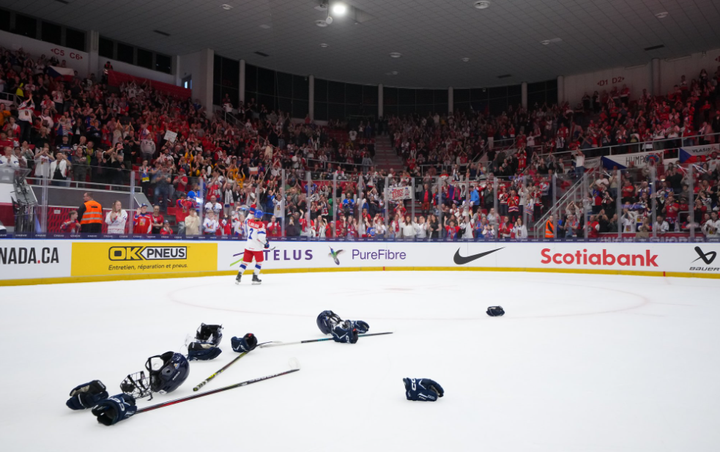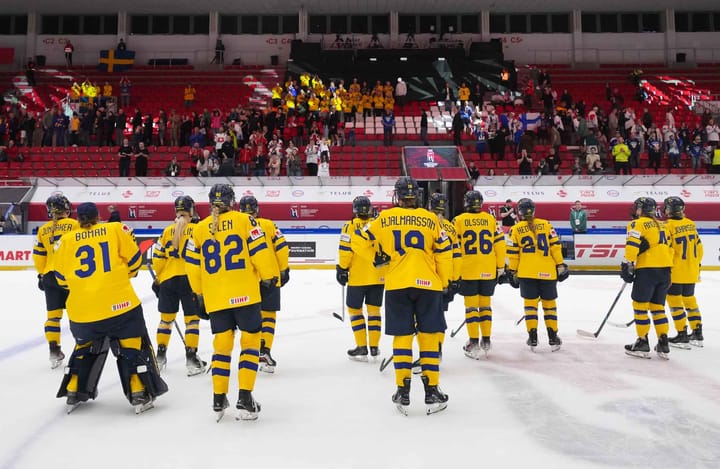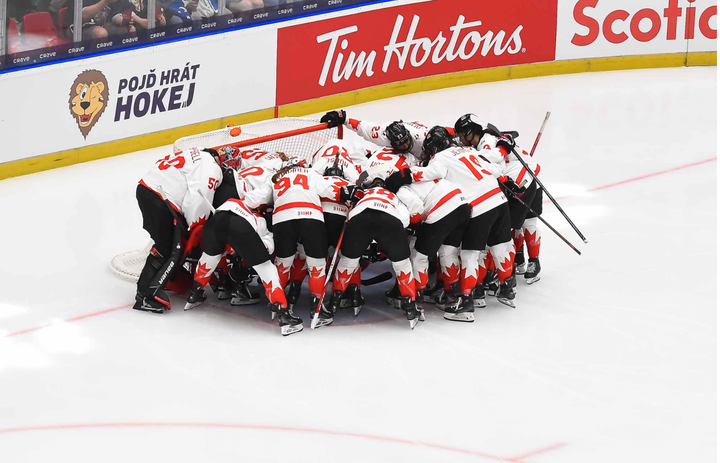Sarah Nurse’s Olympic masterpiece by the numbers
Nurse was essential to Canada’s utterly dominant offense in Beijing
Much has been said about Team Canada’s gold medal-winning performance in Beijing. Some have claimed that this is the best Team Canada we’ve ever seen. And, honestly, it’s hard to argue. The star-studded roster was overwhelmingly good in Beijing. The record-breaking offense, in particular, was uncontainable even for teams with a long history of elite goaltending and sound defensive structure.
There’s a lot to take away from what Canada’s offense accomplished at the 2022 Olympics — not enough has been said about how they managed it without Mélodie Daoust at 100% and out of the lineup for four games — and plenty of individual performances to highlight. But one performance, in particular, deserves the majority of the spotlight.
I’m talking, of course, about Sarah Nurse.
Love that folks are talking about sarah nurse & her record breaking scoring!! For context, there has never been another Black woman on any Olympic ice hockey team, ever. She's the 1st to win gold + 1st & ONLY Black woman to ever play at that level. #GetUncomfortable pic.twitter.com/AYsc6qIixv
— Black Girl Hockey Club (@BlackGirlHockey) February 17, 2022
Nurse led Team Canada and the tournament in points with 18. In 7 GP, she piled up 5 goals and 13 assists, setting an Olympic record in scoring. But that record is just the tip of the iceberg for what Nurse accomplished in Beijing.
Nurse’s Records
- Most points in an Olympic tournament (18). Previous record: 17, Hayley Wickenheiser (CAN).
- Most assists in an Olympic tournament (13). Previous record: 12, Wickenheiser.
- Highest +/- in an Olympic tournament for a forward (+19). Previous record: +15, Sari Fisk (FIN) and Jayna Hefford (CAN).
- Most EV points in an Olympic tournament (14). Previous record: 12, Meghan Agosta (CAN) and Wickenheiser.
- Most PP assists by a Canadian forward in an Olympic tournament (4). Previous record: 3, Wickenheiser and Cherie Piper (CAN)./
With the assist on Marie-Philip Poulin's goal, Sarah Nurse earns her 18th point at the games to break the record for points in a single Olympic tournament.
— Shayna (@hayyyshayyy) February 17, 2022
Critics may rush to point out that Nurse had two more games than her predecessors to break these records, but it’s just as important to note how much better parity is in today’s game. Also, Nurse’s 2.57 Pts/GP is the fourth-highest ever in an Olympics and the highest since Agosta’s 3.0 Pts/GP (9 goals, 5 assists in 6 GP) in 2010 — that’s three Olympics ago. And she did this in the midst of a pandemic and scored an unassisted goal in an N95 mask — another first, for those who love trivia.
The two “extra” games Nurse played are also a direct result of the growth of the women’s game. If you’re working to take away from what Nurse accomplished with this argument, you don’t really have much of a leg to stand on. Oh, and she had three points in two games against Team USA — including two points in the gold medal game — and a hat trick against Finland in the group stage. There was nothing easy about what Nurse (or Canada) accomplished in Beijing.
All of these achievements are special. They also help set the stage for taking a closer look at the numbers to further appreciate Nurse’s role in Canada’s offense.
Something that immediately stands out is Nurse leading the team in EV scoring (14) and sharing the team lead in PP scoring (4) with Natalie Spooner. Throughout her career, Nurse has displayed a full suite of skills in the offensive zone. She can create on the perimeter, attack on the rush, play vulture around the net, she can tip pucks and screen as the bumper on a 1-3-1 power play, and she can win draws — she had a 64.52 FO% — in the o-zone on set plays.
Nurse can beat you in so many different ways; she has a world-class shot, world-class vision, and world-class hockey sense. But her greatest strength is her ability to flourish with other elite players. She is just as effective creating offense with Poulin as she is with Jenner or Spooner or Jamie Lee Rattray. That speaks to her intelligence and ability to read and adapt to her linemates.
Marie-Philip Poulin, considered by many to be the top player in the world, finished second on Canada in scoring with 17 points. Clearly, both Nurse and Poulin were major engines for Canada’s offense, but Nurse and Poulin only picked up points on the same goal six times in the tournament. This tells us that they were able to produce both together and apart. This helps illustrates one of the reasons Canada was simply too much for the rest of the field to handle. They simply had too many weapons, too much depth, and too much talent on the ice.
SARAH NURSE 🚨 What a beauty 🏒
— CBC Olympics (@CBCOlympics) February 7, 2022
Canada takes a 1-0 lead early against ROC pic.twitter.com/VaNPnvhmyP
Nurse had primary assists on goals scored by four different scorers for Canada — Poulin, Brianne Jenner, Natalie Spooner, and Renata Fast. She also scored two of Canada’s four unassisted goals in Beijing. The other two? Both buried by Poulin, and one of those was the penalty shot she scored on in the group stage against Team USA.
All of Nurse’s accomplishments and the gold she brought home to Canada are made all the more significant because she’s the first Black player to ever represent a women’s national team in the Olympics. She made history the moment she stepped on the ice for Canada’s opening game against Switzerland and she didn’t stop until her team won gold.
Tried to grab a box of @nursey16 Cheerios only to discover they’ve sold out quicker than the other two feature boxes. Tell me visibility doesn’t matter. pic.twitter.com/g7j82Pj2M2
— Jessie Eldridge (@Jesss3ldridge) December 30, 2021
Consider for a moment how many of the records that Nurse broke once belonged to Wickenheiser. Consider what that means.
We can count a lot of things in hockey. We can count shot attempts, primary points, turnovers, saves, penalties, registrations, attendance at games and clinics, and countless other things. However, there are things we can’t count — things that are bigger than numbers. We can’t quantify the impact Nurse’s gold and record-breaking performance will have on the future of the game in and outside of Canada. All we can do is wait to see her legacy unfold.
Data courtesy of EliteProspects.com, The IIHF, and Their Hockey Counts. Disclosure: the author of this story owns and operates Their Hockey Counts.





Comments ()